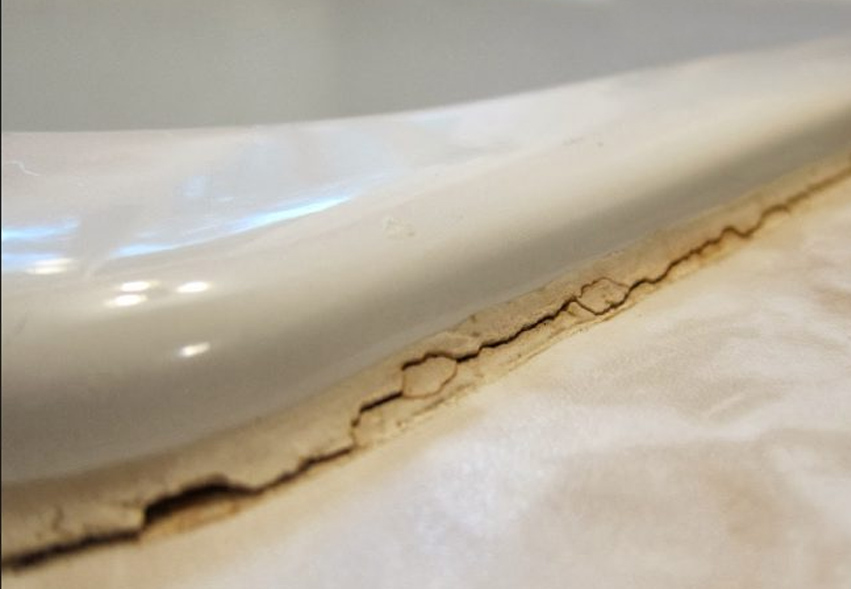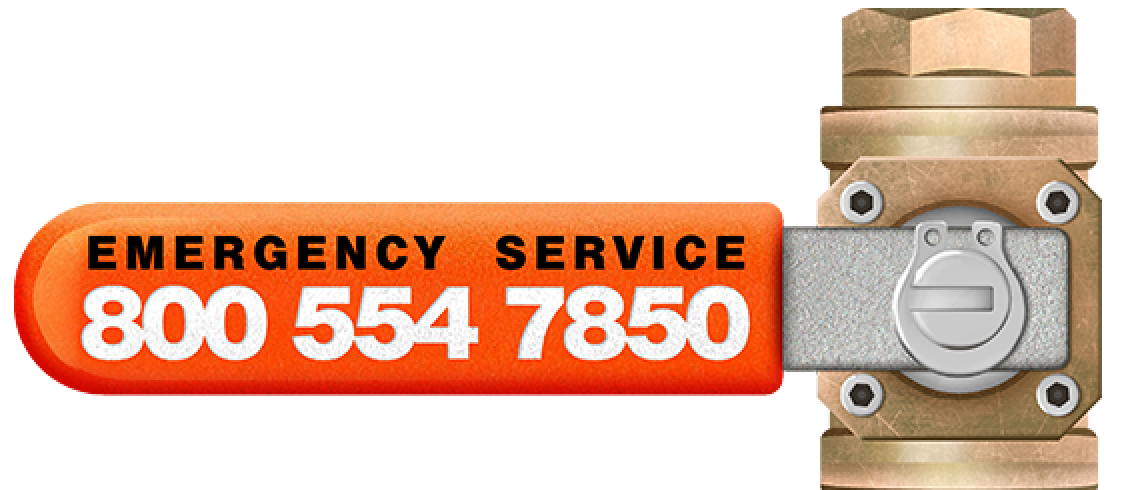Caulk – The Guardian of (Under) Your Sink
Sink Caulk? Really? What are you talking about?
Let me give you a realistic scenario?
You finally get tired of fighting with everything under the sink every time you need to refill your dish soap dispenser, or an old rag to wipe up a mess, or a trash bag, or whatever it is you keep under there, some of which you know you probably shouldn’t. So, what do you do? You sit down, open both doors, and start pulling stuff out. It’s time to reorganize it all and throw away stuff you probably don’t need anyway.
Uh oh! It’s wet down there. It’s just a small pool, but the seam along the back is wet and the wood is a little squishy. You have a leak!
What Exactly IS Caulk and Why Does It Matter?
Caulk is a sealant. It fills the tiny cracks where the counter-top meets the sink and backsplash. You also have it in your bathroom around the tubs and shower enclosures. It’s there to keep water from seeping through and getting under your sink, behind your cabinetry, or in your walls.
Big deal! It’s a little wet under your sink. It’s not like you’re storing food there or anybody ever looks in there, right? Sure. You can get away with that for a while, but what happens when water doesn’t just evaporate?
- Wood can get waterlogged and start to deteriorate
- Musty Odor
- Mold can start growing
- Wet wood invites insects
There are so many things that can cause water to start collecting under your sink. In today’s post, we’re going to talk about the caulk along your back splash and sink.
You love the backsplash because it looks so sharp – oh, and it keeps your walls dry. But then there is that point where the wall meets the counter. That is what you need to look at today. The caulk at the joint of your counter and backsplash serves the ever-important function of keeping the water from seeping down behind your counter, but it doesn’t last forever. It is a key maintenance point in your kitchen. When it gets old, it can start leaking. The same with the sink itself, where it meets the countertop.
Mold will grow in places with a lot of moisture, such as around leaks in roofs, windows, or pipes, or where there has been flooding. Mold grows well on paper products, cardboard, ceiling tiles, and wood products. Mold can also grow in dust, paints, wallpaper, insulation, drywall, carpet, fabric, and upholstery.”
https://www.cdc.gov/mold/dampness_facts.htm
What Could Go Wrong?
Even if you don’t see any water under your sink, you need to inspect your caulking carefully and look for signs of weakness. One characteristic of caulk is that when its integrity is compromised it starts losing its effectiveness at an accelerated rate. Look for these things:
- Dry caulk
- Peeling
- Cracking
- Discoloration (on top or at the edges)
- Pieces missing
- Shrinking
Even when these things look fine, consider the age of the caulk. Depending on the type of caulk used, you may want to re-caulk the area every five years, even if there aren’t any visible indicators of failure. It would be better to replace caulk that is still doing the job (for you don’t know how much longer) than to start having water intrusion behind your counter.
Failing Caulk Means Wet Cabinetry
When you discover water under your sink, and you’ve traced it to compromised caulk, you can be assured that the wood at the point of the leak is a bit soggier than the wood you can see at the bottom of the cabinet.

When the wood of the countertop at the point of the caulk gets wet and stays too wet for an extended period of time it will deteriorate. Additionally, there are non-rent-paying tenants that like to feast on moist wood. You might not even know they are there.
Deteriorating wood, because of moisture or pests, can start to sag. Not only is that unattractive in your kitchen, but it can make it harder to maintain. This is seen most commonly behind the sink. This is because it is an area that gets wet a lot, ignored, and the weight of the sink, the dishes in the sink, and the water in the sink all put stress on the countertop.
Sagging in the cabinetry at the wall/counter joint will make it a bigger challenge to get a good seal. When you do caulk it, the movement of sagging wood will compromise the caulk, decreasing its life and allowing more water seepage. Some material types make this a bigger problem whereas others, like granite, won’t sag.
Even New Homes Can Have Problems With Caulk
Other things that have been reported to affect the integrity of the seal of caulk around your sink, backsplash, tubs, etc. have included settling of a house and drying of wood studs used in new construction. So even if your home is fairly new, it is still a good idea to inspect the caulk of your backsplash looking for any separation from the counter or the wall. If necessary, do some touch-ups to keep your new home new a little longer.
Where There Is Water Damage There Is Mold – Or at Least the Chance for Mold
Deterioration of the wood is only one of the problems that you might experience with moisture seeping through your compromised caulk.
Under your sink is a good place to formulate penicillin, make blue cheese, and grow mushrooms. Ok, so none of that is true. The funguses that grow under kitchen sinks provide no value.
Mildew, just one type of mold, not only gives you an unpleasant musty smell, but it has been known to cause respiratory problems and headaches. Mold is known to also cause allergic reactions, inflammation, fatigue, and many other health problems. In short, you don’t want mold under your sink or anywhere in your home. Some people are more sensitive to mold than others. Even if you don’t notice any effect, it doesn’t do you good and can only harm you.
Mold can be removed. If you find it in your home, you should have a certified company like Construemax help you with that. But the expense and disruption to your life will always be much more unpleasant than replacing the caulking in your kitchen around your sink and at the joint of the backsplash.
It’s Not Just Your Kitchen Sink
Everything in this post about the caulk around your kitchen sink and back splash will apply anywhere in your house where caulking is used. This would include:
- Around the toilet
- Bathroom sinks
- Tubs
- Shower enclosures
- Windows
- Doors
The type of caulking used in each of these situations may be different from each other, as they are made for the job at hand, but the key thing to remember is that caulking ages and will fail at some point. When that happens, water can cause damage that is much more costly to repair than it will be to do some maintenance around the house.
Conclusion
Caulk is a very important material in your home, and it requires maintenance. It’s fairly inexpensive to replace or fix when you do it yourself. But even if you hire your local handyman to do it for you, the prevention of water damage and mold growth alone is worth it.
Caulking isn’t a disaster, and neither is cracked, peeling, or old caulking. But the resulting damage that can happen without it can absolutely become a disaster and an unexpected problem to contend with.
We hope you never need our services. But if the unexpected happens, Relax and Trust Construemax.









